I vividly remember saying to someone in conversation just a few months ago, “I hope we have a cold winter. We sure do need it.” We need it because it’s good for crops and bug suppression and because I love fruit and I want fresh, juicy local peaches come Summer. But I would be a big, fat, liar if I said that I am enjoying getting just what I asked for. January is shaping up to be a month for huddling inside, under your favorite blanket with a good book and a warm dog. Of course, most productive people still have to get dressed and go to work in these frigid temperatures. That means that many of us come home with cold toes and noses running from the chill. Visions of a hot meal dance through our head as we shove our fingertips in front of the heat vents on our way home. This is the season of comfort food.
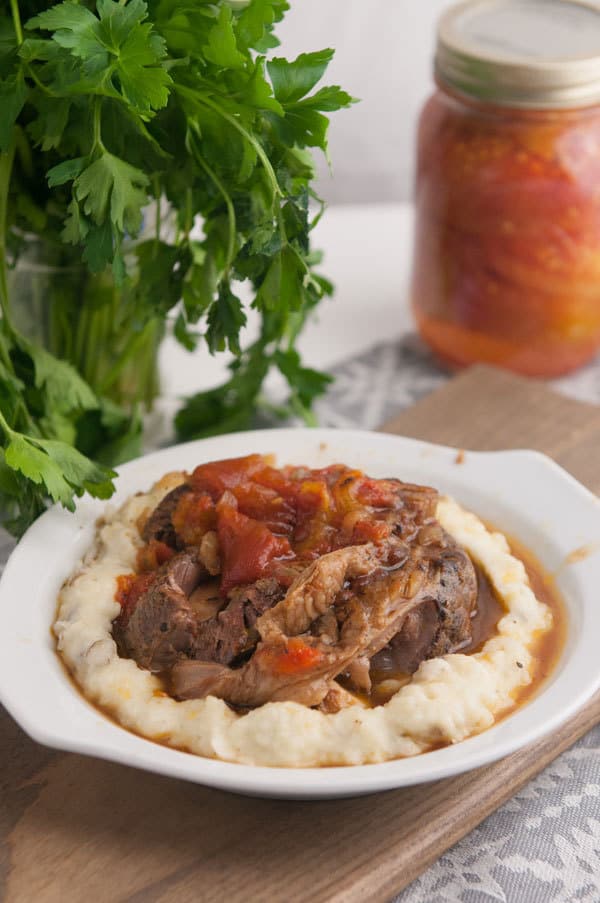
What are Beef Shanks?
Italian Braised Beef shanks are one of my favorite things to comfort myself with. Meaty, fatty, and oh so delicious, these oft overlooked best buys in the grocery are perfect for a cold winter’s night. So, what are beef shanks? They are the crosscut of a leg of beef. Kind of like osso bucco, but instead of veal or lamb, it’s a full grown cow. There is a bone in the middle (and the marrow in it is my favorite part). They do take quite a while to cook and get tender, but they are perfect to make on a weekend night and then heat up and serve over hot mashed potatoes or grits (or if you are keto or low carb, mashed cauliflower!)later in the week. If you can’t find shanks you could substitute short ribs (bone-in) or a chuck roast. If you’ve got a little dry red wine lying around add that to the pot instead of the red wine vinegar in this recipe, it will make it even more divine. And thicken up the sauce in the pot with a little cornstarch or flour if you have the gumption, but it will be delicious without the extra effort.
Beef Shank Tips
So the most important thing (ok, there are two important things) when cooking beef shanks is to, first, get a good sear. Get that pan screaming hot and then strive for a nice brown crust on each side. (For this dish, I recommend a very heavy, wide rimmed pot like this one to cook in.)
The second thing is don’t fill your pot up with too much liquid. The shanks should be about half submerged in liquid. If they are totally covered then you are boiling them not braising them and you’ll lose some flavor. So adjust the liquid level to your pot.
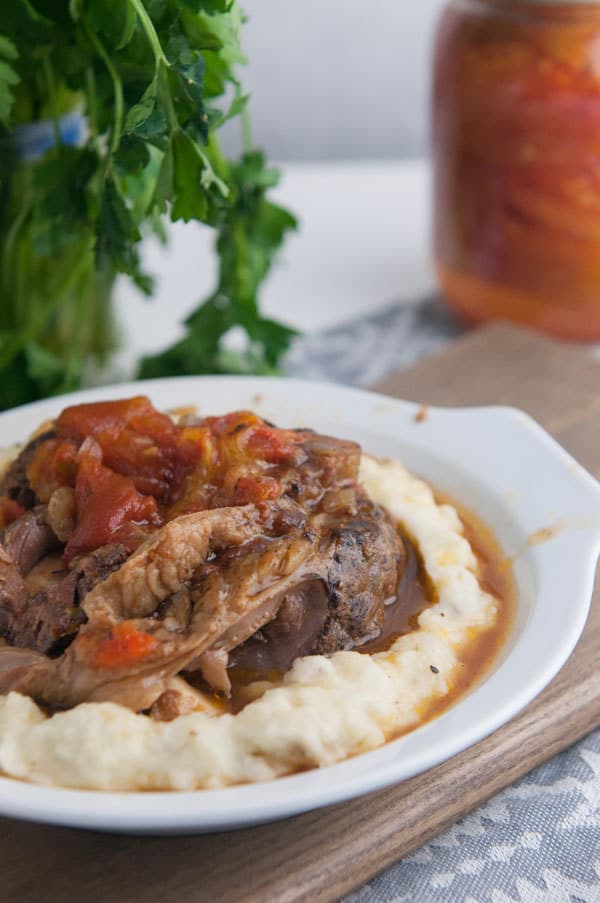
Ingredients
- 4 meaty beef shanks substitute beef short ribs or chuck roast if you can’t find shanks
- ½ teaspoon kosher salt
- ½ teaspoon fresh ground pepper
- 4 slices bacon chopped
- 1 Tablespoon butter
- 1 onion diced
- 2 celery stalks diced
- 2 carrots peeled and sliced
- 1 bay leaf
- 1 teaspoon thyme
- 1 teaspoon rosemary
- 2 Tablespoons red wine vinegar
- 1 15 oz. can whole tomatoes
- 1 8 oz. can of tomato juice
- 2 cups beef broth
Instructions
- Preheat your oven to 250 degrees.
- Sprinkle both sides of your beef shanks with salt and pepper and set aside.
- Heat a large Dutch oven over medium high heat. Sear the beef shanks on both sides and then remove to a plate.
- Reduce the heat to medium and add the bacon and butter to the hot pan. Cook until the bacon starts to render its fat and add in the onion, celery, and carrots. Cook for 5 minutes or until bacon is almost brown and onions begin to soften.
- Stir in the thyme and bay leaf and cook for 30 seconds. Add the red wine vinegar to the pan and scrape up the browned bits on the bottom. Then add in the tomatoes, the tomato juice and the beef broth. Return the beef shanks to the pan along with any juices. Bring to a simmer, then cover with a heavy lid and place in the 250 degree oven. Braise for 3-4 hours, checking for tenderness. The beef is done when the meat easily shreds with a fork.
- Serve over hot mashed potatoes or grits and enjoy!

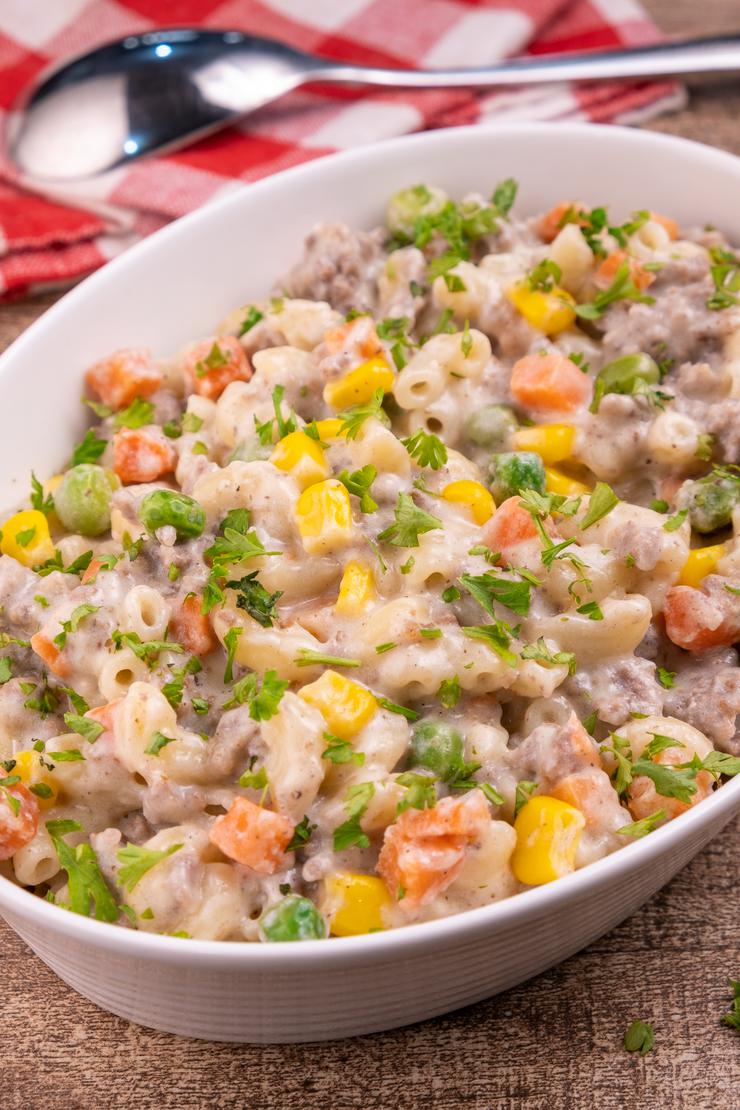
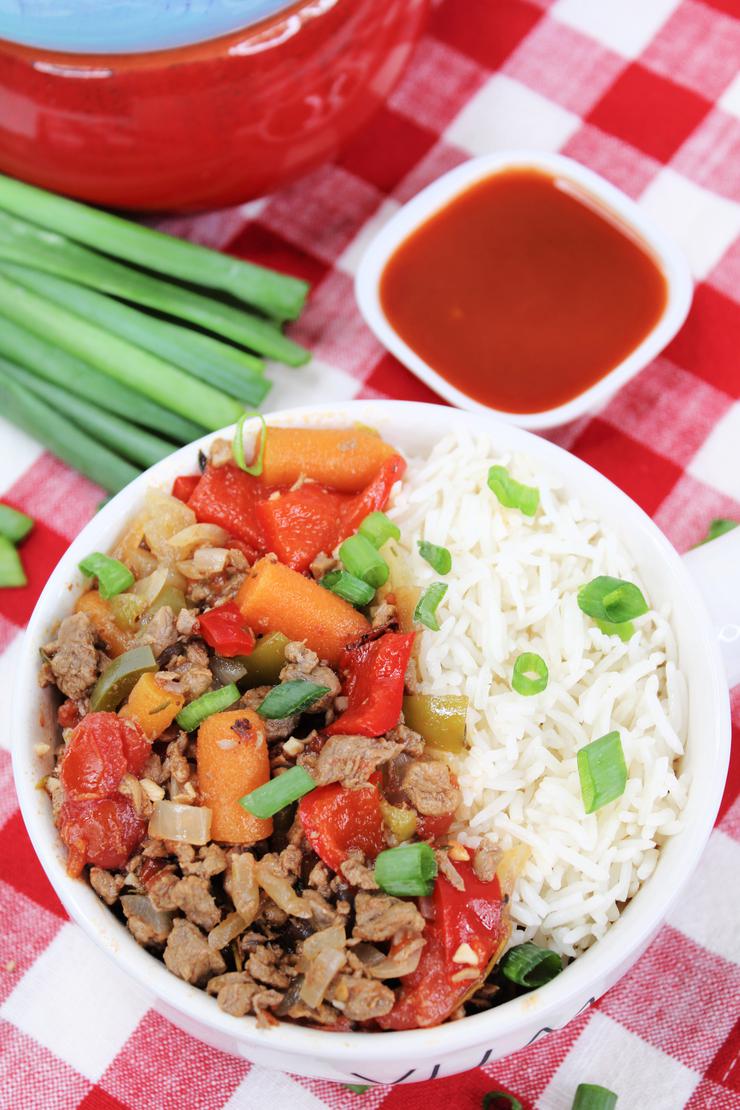
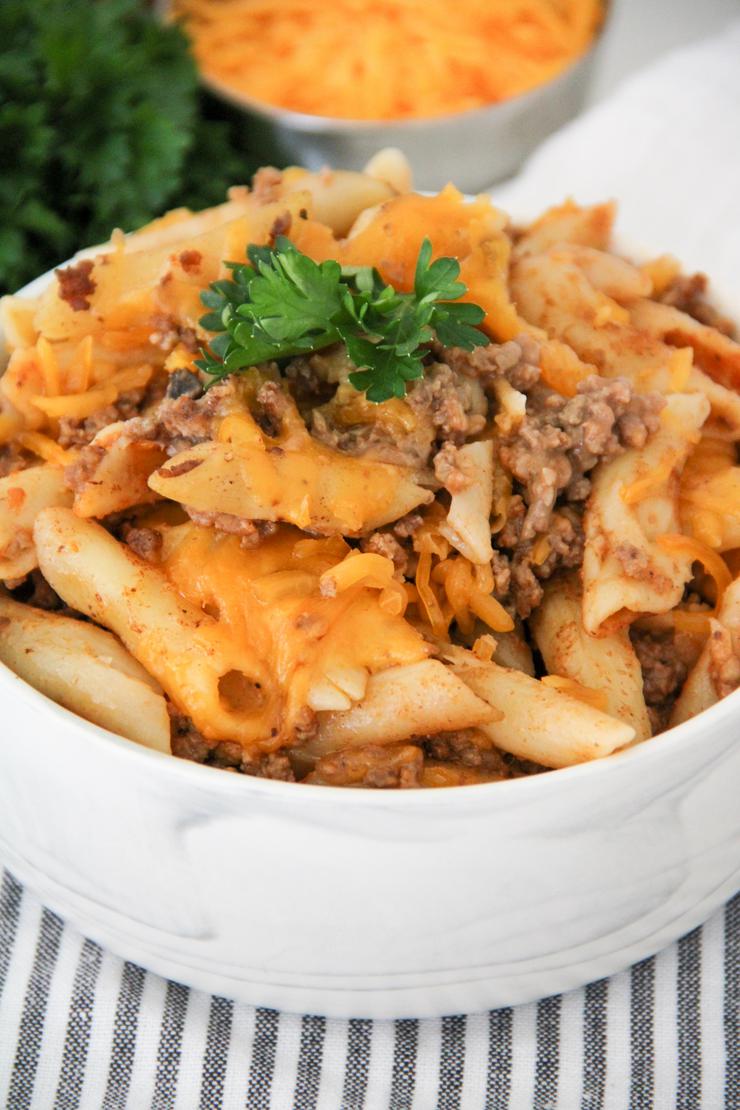
Leave a Reply